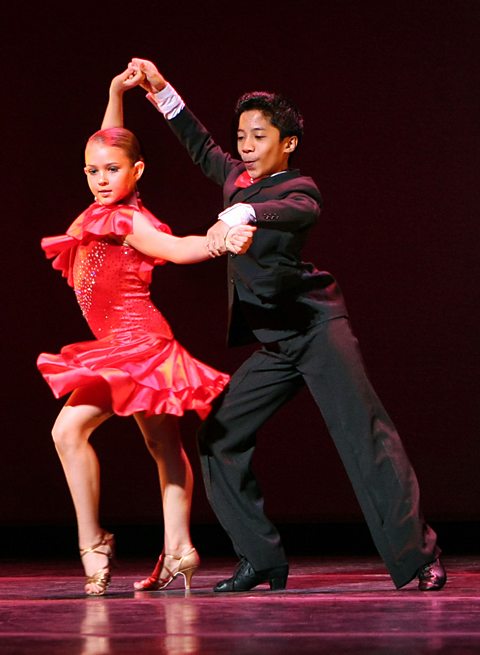Rhythmic characteristics of dance forms
Many dance forms are recognisable by their tempo, metre and characteristic rhythms. These rhythms also have an impact on the dance steps for each form.
Salsa

Salsa is lively dance music with many different styles. It originated in Cuba and has African and Spanish influences. It is very popular in Cuba, Puerto Rico and New York.
Salsa music:
- has a time signature of 4/4
- uses clave rhythms - usually played by claves - which provide the rhythmic foundation
- has melodic and rhythmic syncopation
- uses simple harmony based on repeated chord patterns, often in the minor key
- uses call and response vocals in which the leader sings a line - the call and is answered by a chorus - the response
- usually has a structure of simple melodies followed by coro, or improvised sections
- uses lyrics of love and everyday life
The clave rhythm is a syncopated rhythm grouped in 3 + 2 or 2 + 3:
Tango
Tango is a sensuous paired dance that originated in the 1880s in the slums and bars of Buenos Aires, Argentina. The tango can be identified by its rhythmic characteristics. It has:
- four beats in a bar
- a syncopated ostinato (repeated) rhythm
- accented notes
Here are the two main rhythms found in a tango:
Habenara
Habanera is a variation on the tango that comes from Cuba. It is based on a dotted rhythm, which also appears in some other tango influenced dances. The most well-known habanera is from George Bizetãs Carmen.
Merengue
Merengue was originally the national dance of the Dominican Republic and has African and Spanish influences. Its rhythmic characteristics include:
- a fast 2/4 beat
- catchy melodies and rhythms
- syncopated rhythms played on a tambura (a double-headed drum)
Bossa nova
Bossa nova means ãnew trendã. It is a fusion of samba and jazz. Its rhythmic characteristics include:
- a fast 4/4 or 2/4 beat
- a rhythm with a ãswayingã feel
Here is a typical bossa nova rhythm:
Rumba
The rumba is a slow dance in 4/4 time. This rhythm is the foundation of the rumba and can be heard in accompaniments and melodies:
A well-known example of the rumba is the Jamaican Farewell.
Question
The clave rhythm can be found in which style?
Salsa